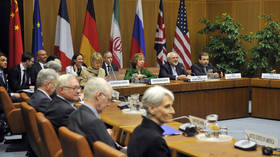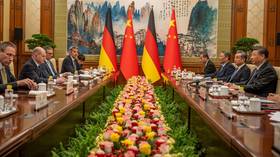The Media Mirror - What's in today's Russian press?
Today Russian newspapers commemorate the tragedy of the nuclear submarine Kursk, the 15th anniversary of the beginning of the Georgia-Abkhazia war and how the world might look in 10 years.
Seven years have passed since one of the greatest naval disasters in History: the death of all those on board the Russian nuclear submarine Kursk. The tragedy, writes TRUD, is far away in the past for many, but not for the families and friends of those who lost their lives. Vladimir Mitiayev, chairman of the society and father of a young officer who died on board Kursk, says:
“Don't pity us, we support and comfort each other, we are still trying to come to terms with our new lives without them, but we are coping – we are sailors after all.”
Another tragedy is also remembered these days: the beginning of the war between Georgia and Abkhazia. VREMYA NOVOSTEI has a retrospective view:
Georgia seceded from the Soviet Union in 1991. Abkhazia, in Soviet times an autonomous republic within Soviet Georgia, started under the new Georgian constitution. Abkhazis and Georgians are different in ethnicity but first and foremost – in religion: Abhazis are Muslims while Georgians are Christians. They lived in peace for centuries but when Abkhazia lost its autonomous status, it became casus belli.
The war started in August, 1992 and ended in September 1993. At first Georgians were victorious and even captured the Abkhazi Capital, Sukhumi, but by the end of the war the Abhazi side took the upper hand. Atrocities against civilians were reported on both sides. 17,000 died in that war, only 4,000 of that number were Abkhazis.
Another thing about that war – there were volunteer units from Chechnya on the Abkhazi side, and that was where they learned how to fight.
The same newspaper reports the opening of a photography exhibition by Yulia Vishnievetskaya. The pictures were all taken in and around the Caucasus mountains in the past decade and due to the difference in lifestyle with Russia proper, the photographer named it “On the neighbouring planet”. Naturally, war is often in the pictures – the region has had no stable peace for 15 years. But at the end, when you've seen all, writes the paper, you see that their life is not so different from ours – in the sense that they are human too.
KOMSOMOLSKAYA PRAVDA asks Sergey Karganov, the Head of the Council on Foreign and Defence Policy, what will Russia and the world look like ten years from now?
The most important answer: no cold war, the current U.S.-Russia problems are the beginning of normal healthy competition between the two nations, however both have not recognised it as such yet and are using dusty rhetoric taken from an old cupboard, because they have not had time to invent a new one.












